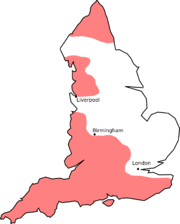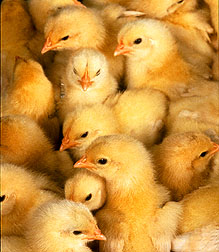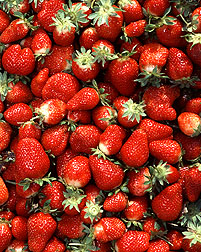In linguistic terms, non-rhotic accents are said to exclude the sound [r] from the syllable coda before a consonant or prosodic break. This is commonly if misleadingly referred to as "post-vocalic R".
Development of non-rhotic accents

On this map of England, the red areas are where the rural accents were rhotic as of the 1950s. Based on H. Orton et al., Survey of English dialects (1962–71). Note that some areas with partial rhoticity (for example parts of the East Riding of Yorkshire) are not shaded on this map.
Non-rhotic speakers pronounce an /r/ in red, and most pronounce it in torrid and watery, where R is followed by a vowel, but not in hard, nor in car or water when those words are said in isolation. However, in most non-rhotic accents, if a word ending in written "r" is followed closely by a word beginning with a vowel, the /r/ is pronounced—as in water ice. This phenomenon is referred to as "linking R". Many non-rhotic speakers also insert epenthetic /r/s between vowels when the first vowel is one that can occur before syllable-final r (drawring for drawing). This so-called "intrusive R" has been stigmatized, but even speakers of so-called Received Pronunciation frequently "intrude" an epenthetic /r/ at word boundaries, especially where one or both vowels is schwa; for example the idea of it becomes the idea-r-of it, Australia and New Zealand becomes Australia-r-and New Zealand. The typical alternative used by RP speakers is to insert a glottal stop where an intrusive R would otherwise be placed.[1]
For non-rhotic speakers, what was historically a vowel plus /r/ is now usually realized as a long vowel. So in Received Pronunciation (RP) and many other non-rhotic accents card, fern, born are pronounced [kɑːd], [fɜːn], [bɔːn] or something similar; the pronunciations vary from accent to accent. This length may be retained in phrases, so while car pronounced in isolation is [kɑː], car owner is [kɑːɹəʊnə]. But a final schwa usually remains short, so water in isolation is [wɔːtə]. In RP and similar accents the vowels /iː/ and /uː/ (or /ʊ/), when followed by r, become diphthongs ending in schwa, so near is [nɪə] and poor is [pʊə], though these have other realizations as well, including monophthongal ones; once again, the pronunciations vary from accent to accent. The same happens to diphthongs followed by R, though these may be considered to end in /ər/ in rhotic speech, and it is the /ər/ that reduces to schwa as usual in non-rhotic speech: tire said in isolation is [taɪə] and sour is [saʊə].[2] For some speakers, some long vowels alternate with a diphthong ending in schwa, so wear may be [wɛə] but wearing [wɛːɹiŋ].
Mergers characteristic of non-rhotic accents
Some phonetic mergers are characteristic of non-rhotic accents. These usually include one item that historically contained an R (lost in the non-rhotic accent), and one that never did so. The section below lists mergers in order of approximately decreasing prevalence.
- panda-pander. In the terminology of Wells (1982) this consists of the merger of the lexical sets commA and lettER. It is found in all or nearly all non-rhotic accents,[3] and is even present in some accents that are in other respects rhotic, such as those of some speakers in Jamaica and the Bahamas.[3] Other possible homophones include area-airier, cheetah-cheater, cornea-cornier, formally-formerly, manna-manner/manor, rota-rotor, schema-schemer, tuba-tuber and pharma-farmer.
- father-farther In Wells's terminology, this consists of the merger of the lexical sets PALM and START. It is found in the speech of the great majority of non-rhotic speakers, including those of England, Wales, the United States, the Caribbean, Australia, New Zealand and South Africa. It may be absent in some non-rhotic speakers in the Bahamas.[3] Other possible homophones include alms-arms, balmy-barmy, lava-larva and spa-spar
- pawn-porn. In Wells's terminology, this consists of the merger of the lexical sets THOUGHT and NORTH. It is found in the same accents as the father-farther merger described above, but is absent from the Bahamas and Guyana.[3] Other possible homophones include awe-or, caulk-cork, gnaw-nor, laud-lord, stalk-stork, talk-torque, taught-tort and thaw-Thor.
- caught-court. In Wells's terminology, this consists of the merger of the lexical sets THOUGHT and FORCE. It is found in those non-rhotic accents containing the pawn-porn merger that have also undergone the horse-hoarse merger. These include the accents of Southern England, Wales, non-rhotic New York City speakers, Trinidad and the Southern hemisphere. In such accents a three-way merger awe-or-ore/oar results. Other possible homophones include bawd-board, flaw-floor, fought-fort, law-lore, paw-pour/pore, raw-roar, sauce-source, saw-sore/soar and Shaw-shore.
- calve-carve. In Wells's terminology, this consists of the merger of the lexical sets BATH and START. It is found in some non-rhotic accents with broad A in words like "bath". It is general in southern England (excluding rhotic speakers), Trinidad, the Bahamas, and the Southern hemisphere. It is a possibility for Welsh, Eastern New England, Jamaican, and Guyanese speakers. Other possible homophones include aunt-aren't, fast-farced and pass-parse.
- paw-poor. In Wells's terminology, this consists of the merger of the lexical sets THOUGHT and CURE It is found in those non-rhotic accents containing the caught-court merger that have also undergone the pour-poor merger. Wells lists it unequivocally only for the accent of Trinidad, but it is an option for non-rhotic speakers in England, Australia and New Zealand. Such speakers have a potential four-way merger taw-tor-tore-tour.[4]. Other possible homophones include Shaw-sure, tawny-tourney and yaw-your
- batted-battered. This merger is present in non-rhotic acents which have undergone the weak vowel merger. Such accents include Australian, New Zealand, most South African speech, and some non-rhotic English speech. Other possible homophones include arches-archers, chatted-chattered, founded-foundered, matted-mattered, offices-officers, sauces-saucers, splendid-splendo(u)red and tended-tendered.
- dough-door. In Wells's terminology, this consists of the merger of the lexical sets GOAT and FORCE. It may be found in some southern US non-rhotic speech, some speakers of African American Vernacular English, some speakers in Guyana and some Welsh speech.[3] Other possible homophones include coat-court, flow-floor, foe-four/fore, go-gore, hoe-whore, poach-porch, poke-pork, row-roar, show-shore, snow-snore, stow-store, toe-tore and woe-wore.
- show-sure. In Wells's terminology, this consists of the merger of the lexical sets GOAT and CURE. It may be present in those speakers who have both the dough-door merger described above, and also the pour-poor merger. These include some southern US non-rhotic speakers, some speakers of African American Vernacular English,and some speakers in Guyana.[3] Other possible homophones include Poe-poor, toe-tour, and goad-gourd
- often-orphan. In Wells's terminology, this consists of the merger of the lexical sets CLOTH and NORTH. It may be present in old-fashioned Eastern New England accents,[5], some New York speakers [6] and also in some speakers in Jamaica and Guyana. It was also present in some words in old-fashioned Received Pronunciation. Other possible homophones include moss-Morse and off-Orff.
- God-guard. In Wells's terminology, this consists of the merger of the lexical sets LOT and START. It may be present in non-rhotic accents that have undergone the father-bother merger. These may include some New York accents,[7] some southern US accents,[8] and African American Vernacular English.[9]. Other possible homophones include cod-card, hot-heart, lodge-large, pot-part, potty-party, and shop-sharp.
- shot-short. In Wells's terminology, this consists of the merger of the lexical sets LOT and NORTH. It may be present in some Eastern New England accents.[10][11]. Other possible homophones include cock-cork, cod-cord, con-corn, odder-order and stock-stork.
- oil-earl. In Wells's terminology, this consists of the merger of the lexical sets CHOICE and NURSE preconsonantally. It was present in older New York accents, but became stigmatized and is sharply recessive in those born since the Second World War.[12]. Other possible homophones include adjoin-adjourn, Boyd-bird, coil-curl, oily-early and voice-verse
Distribution of rhotic and non-rhotic accents
Examples of rhotic accents are: Mid Ulster English, Canadian English and General American. Non-rhotic accents include Received Pronunciation, New Zealand, Australian, South African and Estuary English.
In England, rhotic accents are found in the West Country (south and the west of a line from near Shrewsbury to around Portsmouth), the Corby area, most of Lancashire (north and east of the centre of Manchester), some parts of Yorkshire and Lincolnshire and in the areas that border Scotland. The prestige form, however, exerts a steady pressure towards non-rhoticity. Thus the urban speech of, say, Bristol or Southampton is more accurately described as variably rhotic, the degree of rhoticity being reduced as one moves up the class and formality scales.[17]
Most speakers of Indian English have a rhotic accent.[18] Other areas with rhotic accents include Otago and Southland in the far south of New Zealand's South Island, where a Scottish influence is apparent.
Areas with non-rhotic accents include Australia, most of the Caribbean, most of England (including Received Pronunciation speakers), most of New Zealand, Wales, and Singapore.
Canada is entirely rhotic except for small isolated areas in southwestern New Brunswick, parts of Newfoundland, and Lunenburg and Shelburne Counties, Nova Scotia.
In the United States, much of the South was once non-rhotic, but in recent decades non-rhotic speech has declined. Today, non-rhoticity in Southern American English is found primarily among older speakers, and only in some areas such as New Orleans (where it is known as the Yat dialect), southern Alabama, Savannah, Georgia, and Norfolk, Virginia. [19] Parts of New England, especially Boston, are non-rhotic as well as New York City and surrounding areas. The case of New York is especially interesting because of a classic study in sociolinguistics by William Labov showing that the non-rhotic accent is associated with older and middle- to lower-class speakers, and is being replaced by the rhotic accent. African American Vernacular English (AAVE) is largely non-rhotic.
There are a few accents of Southern American English where intervocalic /r/ is deleted before an unstressed syllable and at the end of a word even when the following word begins with a vowel. In such accents, pronunciations like [kæəlaːnə] for Carolina and [bɛːʌp] for "bear up" are heard.[20] These pronunciations also occur in AAVE.[21]
In Asia, India[18] and the Philippines have rhotic dialects. In the case of the Philippines, this may be explained because the English that is spoken there is heavily influenced by the American dialect. In addition, many East Asians (in China, Japan, and Korea) who have a good command of English generally have rhotic accents because of the influence of American English.
Similar phenomena in other languages
Among the Turkic languages, Uyghur displays more or less the same feature, as syllable-final /r/ is dropped, while the preceding vowel is lengthened: for example Uyghurlar [ʔʊɪˈʁʊːlaː] ‘Uyghurs’. The /r/ may, however, sometimes be pronounced in unusually "careful" or "pedantic" speech; in such cases, it is often mistakenly inserted after long vowels even when there is no phonemic /r/ there.
In standard Khmer the final /r/ is unpronounced. If an /r/ occurs as the second consonant of a cluster in a minor syllable, it is also unpronounced. The informal speech of Phnom Penh has gone a step further, dropping the /r/ when it occurs as the second consonant of a cluster in a major syllable while leaving behind a dipping tone. When an /r/ occurs as the initial of a syllable, it becomes uvular in contrasts to the trilled /r/ in standard speech.
Similarly in Yaqui, an indigenous language of northern Mexico, intervocalic or syllable-final /r/ is often dropped with lengthening of the previous vowel: pariseo becomes [paːˈseo], sewaro becomes [sewajo].
In some dialects of Brazilian Portuguese, word-final /r/ is unpronounced or becomes simply an aspiration (mostly in the interior of Minas Gerais, São Paulo, Paraná and Mato Grosso do Sul states), while in Thai, pre-consonantal /r/ is unpronounced.
Andalusian Spanish is the only Spanish dialect with an unpronounced word-final /r/.[citation needed]
In Mandarin, the variety of Chinese that forms the basis of the national language, coda [ɻ] is only pronounced in some areas, including Beijing, while in others it tends to be silent. 二 "two", for instance, is pronounced [ɑ̂ɻ] in rhotic areas only.
Effect on spelling
| | This article contains Chinese text. Without proper rendering support, you may see question marks, boxes, or other symbols instead of Chinese characters. |
| | This article contains Indic text. Without proper rendering support, you may see question marks or boxes, misplaced vowels or missing conjuncts instead of Indic text. |
- "Er", to indicate a filled pause, as a British spelling of what Americans would render "uh".
- The Korean family name usually written "Park" in English.
- The game Parcheesi.
- British English slang words:
- "char" for "cha" from the Mandarin Chinese pronunciation of 茶 (= "tea" (the drink))
- "nark" (= "informer") from Romany "nāk" (= "nose").
- In Rudyard Kipling's books:
- "dorg" instead of "dawg" for a drawled pronunciation of "dog".
- Hindu god name Kama misspelled as "Karma" (which refers to a concept in several Asian religions, not a god).
- Hindustani कागज़ "kāgaz" (= "paper") spelled as "kargaz".
- "Burma" and "Myanmar" for Burmese [bəmà] and [mjàmmà].
- The development of "ass" (buttocks) as a variant of arse (later standardized as US usage).
See also
References
- ^ Wells, Accents of English, 1:224.
- ^ New Shorter Oxford English Dictionary
- ^ a b c d e f Wells (1982)
- ^ Wells, p. 287
- ^ Wells, p. 524
- ^ Wells (1982), p. 503
- ^ Wells (1982), p. 504
- ^ Wells (1982), p. 544
- ^ Wells (1982), p. 577
- ^ Wells, p. 520
- ^ Dillard, Joey Lee (1980). Perspectives on American English. The Hague; New York: Walter de Gruyter. p. 53. ISBN 9027933677. http://books.google.com/books?id=6zPgjduXBcQC.
- ^ Wells (1982), pp. 508-509
- ^ Wells (1982), p. 225
- ^ Upton, Clive; Eben Upton (2004). Oxford rhyming dictionary. Oxford University Press. p. 59. ISBN 0192801155.
- ^ Upton, Clive; Eben Upton (2004). Oxford rhyming dictionary. Oxford University Press. p. 60. ISBN 0192801155.
- ^ Wakelyn, Martin: "Rural dialects in England", in: Trudgill, Peter (1984): Language in the British Isles, p.77
- ^ Trudgill, Peter (1984). Language in the British Isles. Cambridge, UK: Cambridge University Press. ISBN 0521284090, 9780521284097.
- ^ a b Wells, J. C. (1982). Accents of English 3: Beyond the British Isles. Cambridge, UK: Cambridge University Press. p. 629. ISBN 0521285410.
- ^ Labov, Ash, and Boberg, 2006: pp. 47–48.
- ^ Harris 2006: pp. 2–5.
- ^ Pollock et al., 1998.
Bibliography
- Harris, John. 2006. "Wide-domain r-effects in English"(pdf). Accessed March 24, 2007.
- Labov, William, Sharon Ash, and Charles Boberg. 2006. The Atlas of North American English. Berlin: Mouton de Gruyter. ISBN 3-11-016746-8.
- Pollock, K., et al. 1998. "Phonological Features of African American Vernacular English (AAVE)". Accessed March 24, 2007.
- Wells, J. C. Accents of English. 3 vols. Cambridge: Cambridge University Press, 1982.
Links
- Chapter 7of the Atlas of North American English by William Labov et al., dealing with rhotic and non-rhotic accents in the U.S. (PDF file)
- Rhotic vs non-rhotic, intrusive "r"from the alt.usage.english newsgroup's FAQ
- Rhotic or non-rhotic English?, Pétur Knútsson, University of Iceland
- 'Hover & Hear' accents of English from around the world, both rhotic and non-rhotic.




 Email
Email






